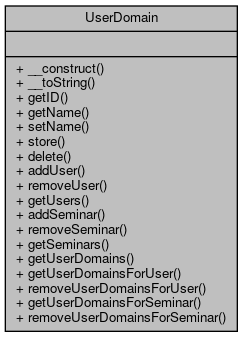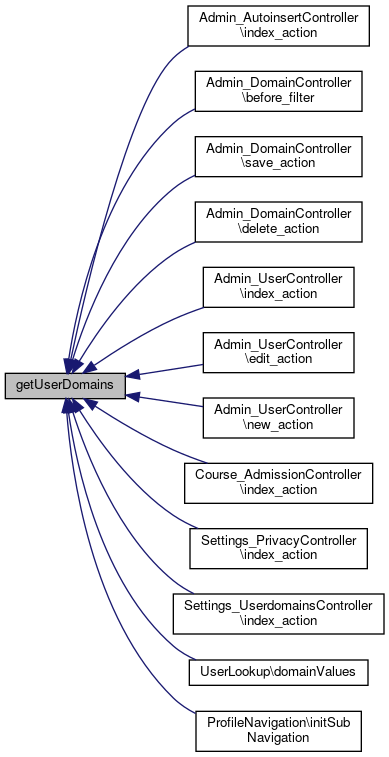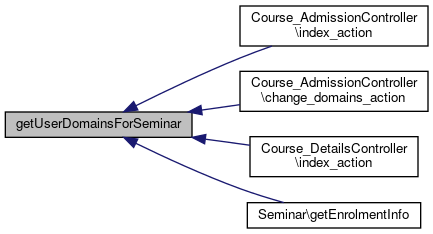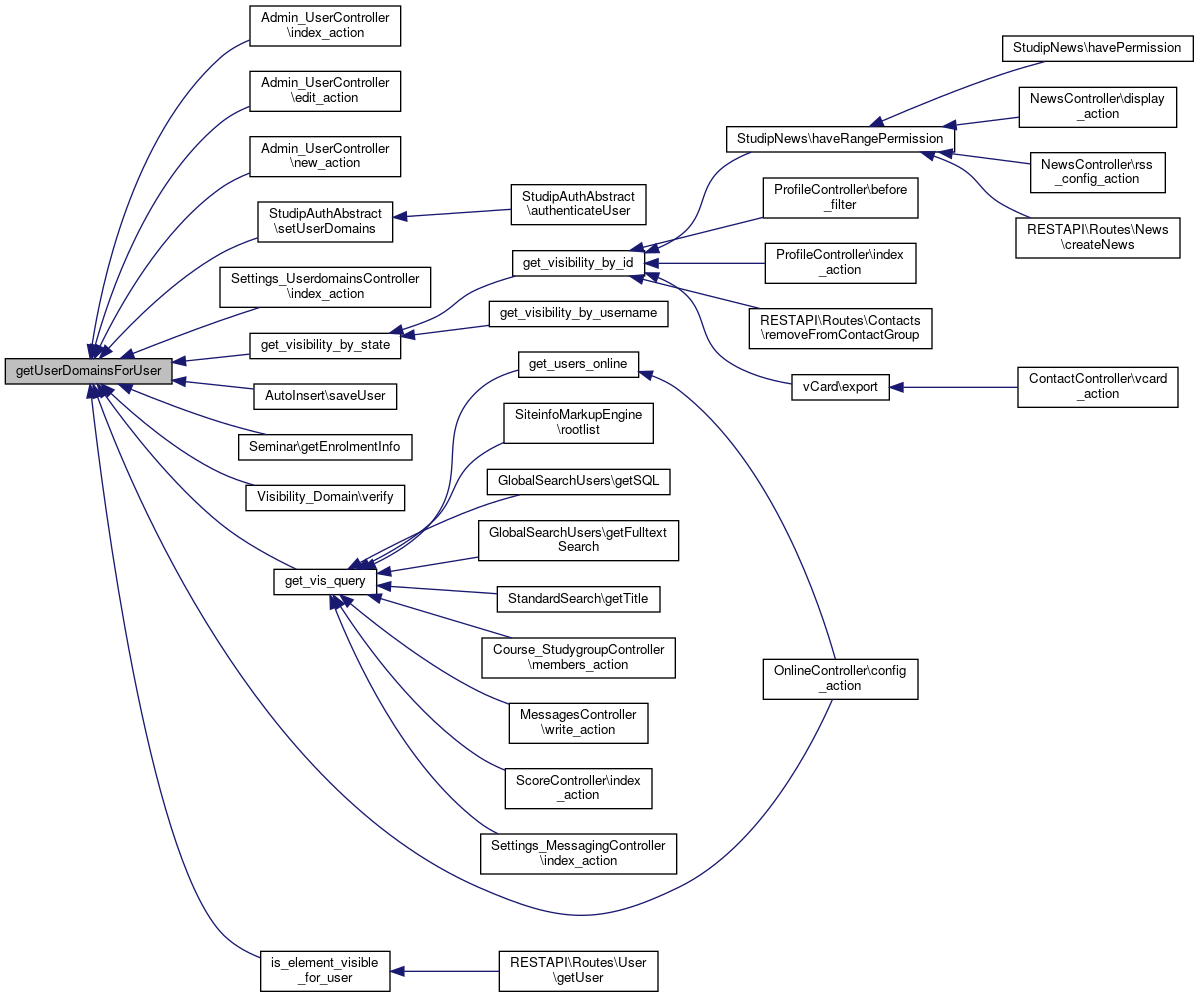
Public Member Functions | |
| __construct ($id, $name=NULL) | |
| __toString () | |
| getID () | |
| getName () | |
| setName ($name) | |
| store () | |
| delete () | |
| addUser ($user_id) | |
| removeUser ($user_id) | |
| getUsers () | |
| addSeminar ($seminar_id) | |
| removeSeminar ($seminar_id) | |
| getSeminars () | |
Static Public Member Functions | |
| static | getUserDomains () |
| static | getUserDomainsForUser ($user_id) |
| static | removeUserDomainsForUser ($user_id) |
| static | getUserDomainsForSeminar ($seminar_id) |
| static | removeUserDomainsForSeminar ($seminar_id) |
Detailed Description
Simple class representing a user domain in Stud.IP.
Constructor & Destructor Documentation
◆ __construct()
| __construct | ( | $id, | |
$name = NULL |
|||
| ) |
Member Function Documentation
◆ __toString()
| __toString | ( | ) |
Get a string representation of this user domain.
◆ addSeminar()
| addSeminar | ( | $seminar_id | ) |
Add a seminar to this user domain.

◆ addUser()
| addUser | ( | $user_id | ) |
Add a user to this user domain.

◆ delete()
| delete | ( | ) |
Delete this user domain from the database.

◆ getID()
| getID | ( | ) |
Get the ID of this user domain.
◆ getName()
| getName | ( | ) |
Get the display name of this user domain.
◆ getSeminars()
| getSeminars | ( | ) |
Get an array of all seminars in this user domain. Returns an array of seminar IDs.

◆ getUserDomains()
|
static |
Get an array of all defined user domains. Returns an array of UserDomain objects.


◆ getUserDomainsForSeminar()
|
static |
Get an array of all user domains for a specific seminar. Returns an array of UserDomain objects.


◆ getUserDomainsForUser()
|
static |
Get an array of all user domains for a specific user. Returns an array of UserDomain objects.


◆ getUsers()
| getUsers | ( | ) |
Get an array of all users in this user domain. Returns an array of user IDs.

◆ removeSeminar()
| removeSeminar | ( | $seminar_id | ) |
Remove a seminar from this user domain.

◆ removeUser()
| removeUser | ( | $user_id | ) |
Remove a user from this user domain.

◆ removeUserDomainsForSeminar()
|
static |
Remove all user domains for a specific seminar.


◆ removeUserDomainsForUser()
|
static |
Remove all user domains for a specific user.

◆ setName()
| setName | ( | $name | ) |
Set the display name of this user domain.
◆ store()
| store | ( | ) |
Store changes to the user domain to the database. This currently only saves the display name.

The documentation for this class was generated from the following file:
- lib/classes/UserDomain.php

